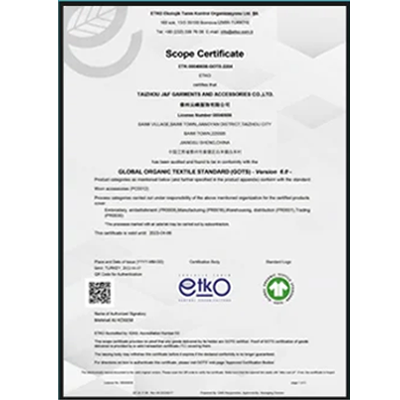Hey there! It’s me, Wade! I wanted to sit down with you today and chat about something that might sound a bit boring at first, but it’s actually super interesting and important: the big question of *why did IBM acquire Red Hat?* I mean, who wouldn’t want to know why a giant like IBM would scoop up another company? Grab a snack and let’s dive into this together. I promise it will be a fun ride!
1. The Big Picture: Why Did IBM Acquire Red Hat?
To put it simply, IBM acquired Red Hat to get ahead in the cloud game. This deal was all about IBM strengthening its cloud computing offerings. You see, Red Hat is known for its open-source software, especially its Linux operating system, which is like the cool kid in school. Everyone wants to be friends with it!
Now, let’s break this down so we can better understand why this move was so important:
1.1 Strengthening Cloud Services
First off, IBM wanted to beef up its cloud services. With more businesses moving to the cloud, IBM knew it had to step up. Red Hat’s technology gave IBM a way to do just that. Think of it like IBM getting a shiny new tool to build better bridges – bridges to connect their tech with what businesses want.
1.2 Embracing Open Source
Then there’s the whole open-source thing! Red Hat is like the superhero of the open-source world. By acquiring them, IBM could not only catch onto this trend but also show everyone they are friendly with the open-source community. It’s like hanging out with the cool kids. Everyone wants to be a part of that!
1.3 Competing with Giants
And let’s not forget about competition. IBM is trying to outsmart competitors like Amazon Web Services (AWS) and Microsoft Azure, who are dominating the cloud market. Acquiring Red Hat was IBM’s way of leveling the playing field. It’s like bringing in a star athlete to boost your team’s performance!
2. Who is Red Hat Anyway?
A lot of folks might be scratching their heads and asking, “What even is Red Hat?” Well, let me break it down for you!
2.1 Open-Source Software Leader
Red Hat is a major player in the open-source software field. You know how some software comes with a price tag? Well, open-source is like sharing a piece of cake. Everyone can have a piece for free, and they can even change the recipe if they want!
2.2 Customer Base
Plus, Red Hat has a killer customer base. They’ve worked with tons of big-name companies, providing support that helps folks use open-source software effectively. When IBM brought Red Hat on board, they snagged that trust and reliability!
3. What’s in it for IBM?
So, let’s get into the nitty-gritty. Why did this acquisition matter so much to IBM? Here are a few things to chew on:
3.1 Boosting IBM’s Cloud Portfolio
IBM was looking to expand its cloud portfolio, and Red Hat’s technologies brought some serious firepower to the table. Think of it like adding rocket fuel to a classic car. It’s still the same car, but now it goes way faster!
3.2 Hybrid Cloud Solutions
Another reason is that Red Hat specializes in hybrid cloud solutions, which means combining private and public clouds. Businesses are totally into this because it gives them flexibility. IBM wanted to ride that wave.
3.3 Access to the Developer Community
And then there’s the developer community. Open-source tools have a massive following! By bringing Red Hat into the family, IBM gets access to a whole new crowd of tech-savvy folks. It’s like gaining a fan club that can help make even cooler stuff!
4. The Financial Side of Things
Okay, let’s chat about the money, because, let’s face it, this was a huge deal worth $34 billion! So what does this all mean financially?
4.1 Large Investment, Big Returns
IBM knew it was making a large investment. But the goal here? Big returns in the long run. Think of it as planting a tree. You spend the time and energy to plant it, and after some years, you get fruits. Valuable fruits!
4.2 Shifting Revenue Streams
IBM is trying to shift its revenue streams. Adding Red Hat means they could tap into that delicious subscription model. Businesses love subscription services. It’s like Netflix for software!
5. How Will This Affect Red Hat Customers?
For customers who are already using Red Hat, you might be wondering how this affects you. It’s a great question, and I have some insights!
5.1 Enhanced Support
First off, customers can expect improved support! With IBM’s resources, Red Hat can expand its support team, making sure customers have the help they need.
5.2 New Products and Services
Secondly, Red Hat customers will have access to new products and services. Imagine having a bigger menu at your favorite restaurant. There are more options for everyone!
5.3 Reliability and Trust
And let’s not forget continuity. Red Hat has built a reputation for reliability, and IBM plans to keep that trust intact. They want to ensure that customers feel secure with their software choices.
6. The Future of IBM and Red Hat
Now, let’s spin the globe and think about the future. What can we expect from this union? Here are my predictions:
6.1 Growth in Cloud Solutions
First, I anticipate growth in cloud solutions. With both companies working together, businesses are likely to turn to them for their hybrid cloud needs.
6.2 Innovations in Technology
Innovation is also on the horizon. We may see new tools and technologies emerging from this partnership! Imagine the coolest gadgets coming to life because two big players collaborated.
6.3 Influence on the Tech Landscape
Finally, this acquisition could influence the larger tech landscape. It may change how other companies view open-source software. Whoever thought a giant like IBM could be on such good terms with open-source?
7. Lessons Learned from This Acquisition
This whole saga teaches us a thing or two. I mean, what can we learn from this big acquisition?
7.1 Importance of Innovation
For starters, innovation is key. Companies that don’t stay innovative may get left behind. This acquisition is a classic example of how to stay relevant!
7.2 Building Partnerships
Secondly, building partnerships is crucial. Working together often opens new opportunities. Just like teamwork makes the dream work!
7.3 Understanding Market Trends
Lastly, keeping an eye on market trends is important. Companies must adapt to changing landscapes. This is how they stay ahead of the curve!
8. Chatting It Out: Why Did IBM Acquire Red Hat? Again?
So, let’s recap! *Why did IBM acquire Red Hat?* It comes down to strengthening their cloud services, embracing the open-source movement, and staying competitive in a fast-paced market.
The acquisition allows IBM to gain customers’ trust and provide cloud solutions that businesses love. So, it’s a win-win from all sides!
Quick Takeaways
FAQs about IBM and Red Hat
1. Why did IBM think acquiring Red Hat was a good idea?
IBM saw the opportunity to boost its cloud offerings and embrace open-source software, positioning itself better in the tech market.
2. What does the acquisition mean for Red Hat’s customers?
Customers can expect enhanced support, new tools, and more resources, ensuring their needs are well cared for.
3. How is this acquisition financially significant?
The $34 billion deal signals IBM’s commitment to increasing its cloud services revenue by tapping into Red Hat’s subscription model.
4. Will Red Hat keep its identity under IBM?
Yes! Red Hat is expected to maintain its open-source identity while benefiting from IBM’s vast resources.
5. What can we expect from this partnership in the future?
Expect more innovation in cloud services, new technology tools, and possibly a shift in how businesses view open-source software in corporate environments.
Thanks for joining me, my friend! If you enjoyed this conversation about why IBM acquired Red Hat, please share it with your buddies. I’d love to hear your thoughts! Do you think this acquisition was a smart move? Let’s chat about it!
Before you go, check out these references for additional context:
References
1. “IBM and Red Hat Acquisition Overview,” TechCrunch. TechCrunch
2. “Understanding the Business Model of Red Hat,” Forbes. Forbes
3. “The Future of IBM and Red Hat Collaboration,” Gartner. Gartner




















































